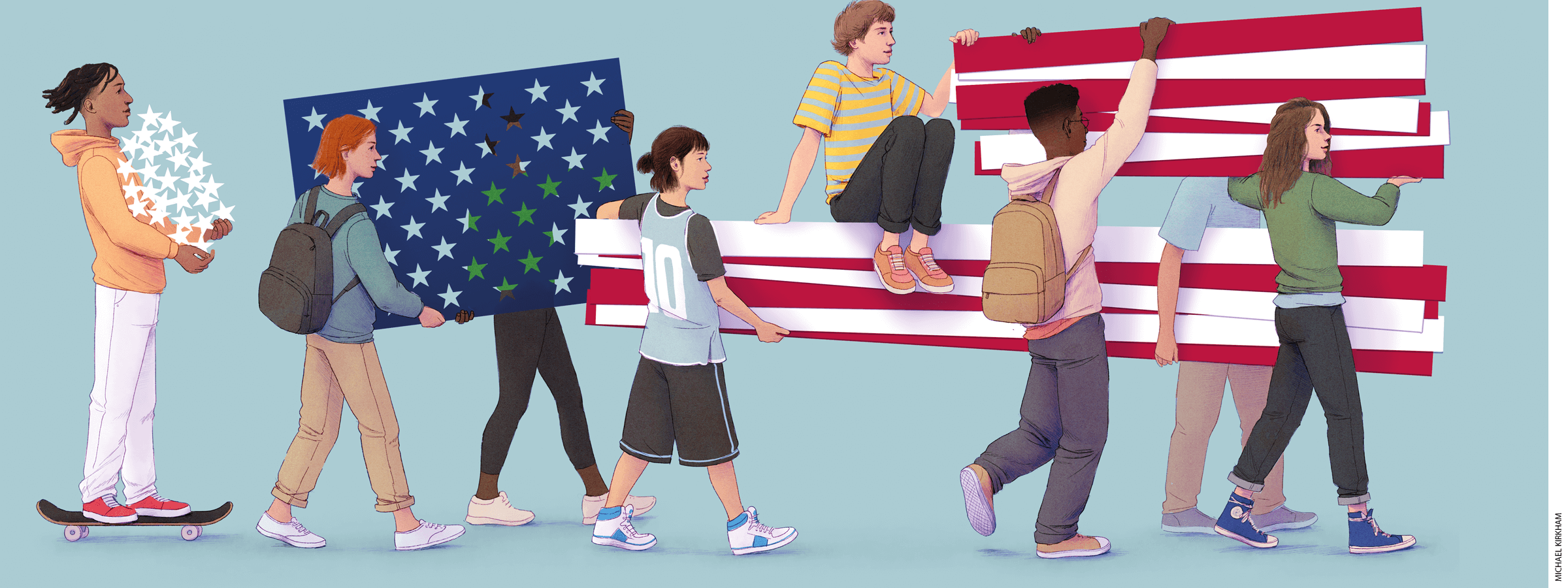
Every December, in a practice that dates back decades, the chief justice of the United States releases a year-end report on the federal judiciary. Despite the New Year’s Eve timing of these reports, they typically elicit less celebration than somnolence. As one veteran journalist who covers the Supreme Court noted with considerable understatement, “The year-end report is usually devoid of anything controversial.”
In 2019, however, with the United States deep in the grip of political polarization, Chief Justice John G. Roberts Jr. issued a year-end report that proved arresting. That unusual document explored the judiciary’s myriad connections to civic education. “By virtue of their judicial responsibilities, judges are necessarily engaged in civic education,” Roberts wrote. “When judges render their judgments through written opinions that explain their reasoning, they advance public understanding of the law.” The Supreme Court’s iconic decision invalidating school segregation in Brown v. Board of Education, Roberts noted, could be viewed through this prism. Chief Justice Earl Warren saw to it that the 1954 opinion would be concise enough—at just 13 pages—to be reprinted in newspapers around the nation. Brown, Roberts wrote, exemplifies “the power of a judicial decision as a teaching tool,” as it provided “every citizen [an opportunity to] understand the Court’s rationale.” Roberts delivered a sobering assessment of the nation’s disregard for democratic ideals and the attendant decline of civic education. “[W]e have come to take democracy for granted,” Roberts lamented, “and civic education has fallen by the wayside.”
Since Roberts issued this cri de coeur in 2019, concerns about democracy and civic education have only intensified. Most prominently, the atrocities committed at the Capitol on January 6, 2021, represented the starkest repudiation of democracy on American soil in decades. One scholar termed that day “a Sputnik moment for an ambitious revival of civics instruction.” As divisions over race, gender, and immigration have deepened, controversies involving civic education have become a salient, persistent topic of national controversy. Five years ago, the New York Times released its 1619 Project, which emphasized the nation’s deep connections to race-based chattel slavery and the ongoing legacy of that odious institution. In response, President Donald Trump formed the 1776 Commission with an eye toward attacking and displacing the 1619 Project’s slavery-based narrative.
These competing projects have been amply debated, and I have no interest in rehearsing those discussions here. I do, however, want to press two observations. First, the 1619 Project and the 1776 Report both portrayed themselves as tools of civic education. Each contemplated how schools could implement the animating ideas of the respective projects, and various educators across the nation have done just that. Second, the competing reports, which dispute the nation’s true origins, embody the profound polarization that afflicts American society. Our two dominant political tribes appear perilously close to singing in unison: “You say 1619. I say 1776. Let’s call the whole thing off.”
It sometimes seems that agreeing to disagree (often angrily) is the only thing that Blue America and Red America can settle on. Yet the nation would be well served by attempting to identify some common ground on the question of civic education. Rather than fighting exclusively about what should not be taught in the nation’s public schools, why not contemplate approaches to civic education that might garner widespread support?
Even in our intensely divided era, there is broad, bipartisan agreement that the current state of civic education is lacking. Not long ago, Senator Chris Coons, a Democrat from Delaware, and Senator John Cornyn, a Republican from Texas, co-sponsored a bill called the “Civics Secures Democracy Act.” That measure, if enacted, would appropriate roughly $6 billion over the course of six years to foster education in civics and history. Supreme Court justices from across the ideological spectrum have also joined forces on this cause. Justices Neil Gorsuch and Sonia Sotomayor, who often disagree in high-profile cases, have made joint appearances touting the need to deepen student comprehension of our basic civic structures. On such occasions, Gorsuch has asserted that the state of civic education poses a national security crisis and noted that political and cultural polarization forms an important part of the crisis: “How can the democracy function if we can’t talk to one another, and if we can’t disagree, kindly, with respect for one another’s differences and different points of view?” For her part, Sotomayor has also dedicated significant time to promoting iCivics, an organization founded and formerly chaired by Justice Sandra Day O’Connor, which seeks to capitalize on youngsters’ fascination with video games to spark their interest in learning about government.
Concerns regarding civic education are well founded; the state of civic comprehension in the United States is—in a word—grim. National Assessment of Educational Progress civics exams conducted in 2022 revealed that less than 25 percent of American 8th graders demonstrated proficiency in the subject. Fewer than one-third of the students could identify why the Founders adopted the Declaration of Independence. The civic knowledge of adults is also lacking. In 2016, one survey determined that only about one in four Americans could name all three branches of government.
In this essay, I aim to amplify and expand on Chief Justice Roberts’s call to connect the judiciary to civic education. I seek to promote an approach that I label “student-centered civic education”—an approach that could find bipartisan support. This method places the historic struggles for students’ constitutional rights front and center in the curriculum. It foregrounds the major Supreme Court decisions that have shaped the everyday lives of students across the nation, but it also uses these decisions as a springboard for discussing the broader issues, arguments, and student activism that fueled those controversies. It is simultaneously retrospective and prospective—teaching students about the hard-fought constitutional struggles that young people waged yesteryear and encouraging them to evaluate critically the contours of their rights in the context of tomorrow’s civic society. A student-centered approach to civic education thus frames students as active participants in shaping our constitutional order and positions them to become engaged, stewards of our democracy.
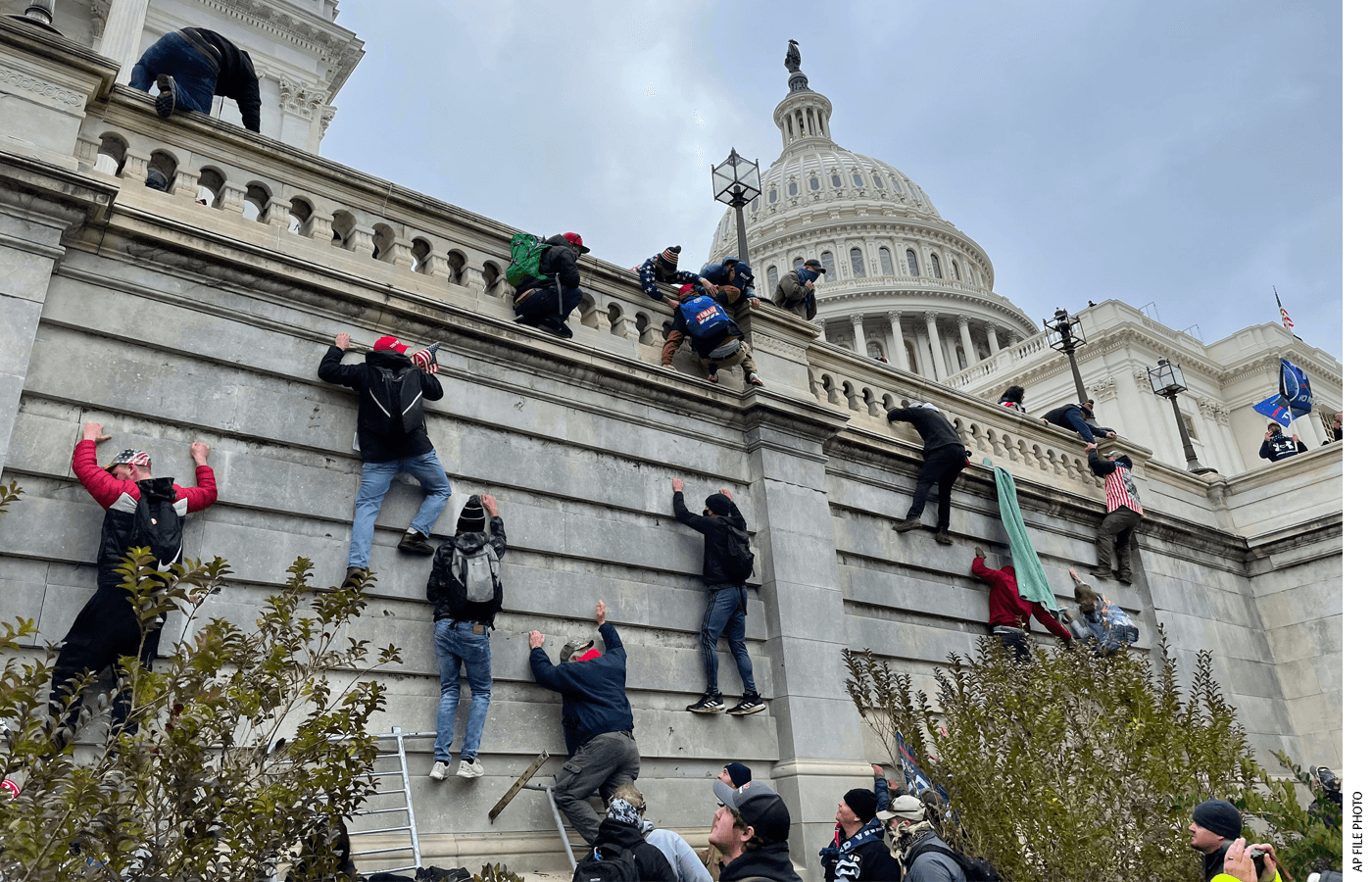
Scintillating Questions
The student-centered approach examines the relationships between the people and their government in a way that is tangibly connected to the daily lives of adolescents. High school students tend to view abstract constitutional concepts—such as federalism or the separation of powers—as disconnected from the things that matter most to them. But highlighting constitutional conflicts involving students and the limitations that judicial opinions have placed on school authority hits home for young people. The nation’s 50 million public school students, like most people, will gravitate toward subject matter that immediately informs their own lives.
Cases involving the constitutional rights of students will captivate them as no other civic-education topic can. Should schools be able to force students who participate in extracurricular activities to provide urine samples for drug testing? Should school officials be able to punish students by striking them repeatedly with a two-foot-long wooden paddle? Should they be able to strip-search students in an effort to locate contraband ibuprofen tablets? Should schools be able to exclude unauthorized immigrants? Should schools be able to suspend a cheerleader from the junior-varsity squad for an entire year because she posted a vulgarity on social media—off-campus on a weekend afternoon—to vent her frustration about failing to make varsity? Should high school football coaches be allowed to kneel down in prayer at midfield following games, or do such rituals religiously coerce players? These are among the scintillating questions presented by actual Supreme Court opinions involving constitutional rights in schools. These questions, I submit, would engage even the most jaded of students.
The student-centered approach also drives home the point that young people have made invaluable contributions to our current constitutional order. Sometimes students perceive civic affairs as the exclusive domain of adults. But when students today read about teenagers John Tinker and Mary Beth Tinker wearing black armbands to school in the 1960s over the objections of school authorities in Des Moines, Iowa, they understand that constitutional rights do not materialize out of thin air. The Tinkers dared to protest the Vietnam War on school grounds, endured suspensions, and waged a four-year court battle to make students’ First Amendment rights a reality. Tinker v. Des Moines Independent Community School District demonstrates that young people of prior generations have successfully stood up for constitutional rights and played a pivotal role in creating modern American society. And today’s students may realize that they, too, have an indispensable role to play in bequeathing a constitutional tradition to subsequent generations.
Student-centered civic education also helps young Americans gain deeper understanding and respect for constitutional values at a time when some of those values have come under assault. It is no secret, for example, that many young people today harbor grave skepticism about the First Amendment’s utility. Free expression, critics maintain, is used as either a shield to protect the powerful or a cudgel to bash the powerless. But if students learned early on how young people have harnessed the power of free speech in schools—including not just Tinker’s protection of antiwar speech but other judicial precedents such as one vindicating the ability of civil rights activists in Mississippi to promote racial equality—they would see how the First Amendment often protects minority opinion and protest.
The nation’s universities have in recent years witnessed numerous high-profile conflagrations where students have evinced precious little respect for free speech. Commentators have expressed alarm that our institutions of higher education—where intellectual exchange on contentious topics is supposed to be prized—appear to hold free speech in such low esteem. Too few of those commentators have noted, though, that college students may well disregard freedom of expression partly because they did not meaningfully encounter the concept in elementary or secondary school. Cultivating respect for free-speech values should not be delayed until college. That process needs to start long before then, something that a student-centered civic education would prioritize.
The topics presented in a student-centered civic-education curriculum lend themselves to active debate among students about their constitutional rights in school. After students learn the basics of, say, free speech in schools, teachers should offer novel factual scenarios in mock hearings designed to test the limits of permissible student speech, assigning half of the class to act as lawyers for the student and the other half to act as lawyers for the school board. These mock disputes would encourage students to disagree with each other’s constitutional views respectfully and thereby aid our ailing democratic experiment. If students do not begin learning how to disagree with their peers in the relatively safe school context, disagreements in non-school settings will increasingly escalate into the ad hominem attacks that have become a disconcerting staple of both our politics and our broader culture. Teachers could take this exercise a step further by assigning students to defend a legal position that runs counter to the students’ own viewpoints, requiring them to articulate the most compelling arguments on the other side and helping them to develop empathy for people who disagree with them.
Some of the most significant Supreme Court opinions assessing students’ constitutional rights have emphasized the role of public schools in developing citizens. Students could explore this theme in their coursework. In Brown, for instance, Warren declared that “education is perhaps the most important function of state and local governments. . . . It is the very foundation of good citizenship.” In 1972, when assessing an objection to a compulsory education law, the court wrote that “education is necessary to prepare citizens to participate effectively and intelligently in our open political system if we are to preserve freedom and independence.” In 2021, Justice Stephen Breyer’s opinion for the court in Mahanoy Area School District v. B.L., a case involving off-campus student speech, noted that public schools themselves have an interest in protecting students’ free expression because doing so preserves our democratic order. “America’s public schools are the nurseries of democracy,” Breyer contended. “Our representative democracy only works if we protect the marketplace of ideas.”
The Supreme Court has also embraced a special responsibility for safeguarding constitutional rights in the school context, lest students draw baleful lessons about citizenship. Justice Robert Jackson powerfully expressed this point in 1943, when he led the court’s invalidation of a state measure that required students to salute the American flag in West Virginia State Board of Education v. Barnette. “That [public schools] are educating the young for citizenship is reason for scrupulous protection of Constitutional freedoms of the individual,” Jackson wrote, “if we are not to strangle the free mind at its source and teach youth to discount important principles of our government as mere platitudes.”
In exploring the court’s conceptualization of public schools as institutions that form citizens, students should understand that justices hold divergent views on what citizenship entails, particularly for young people in school settings. Some justices have embraced a robust conception of citizenship for students, suggesting that schools ought to permit wide-ranging, spirited debates on contentious questions. Writing for the court in Tinker, Justice Abe Fortas espoused this robust notion of citizenship. “Any word spoken, in class, in the lunchroom, or on the campus, that deviates from the views of another person may start an argument or cause a disturbance,” Fortas stated. “But our Constitution says we must take this risk, and our history says that it is . . . this kind of openness . . . that is the basis of our national strength and of the independence and vigor of Americans who grow up and live in this relatively permissive, often disputatious, society.”
Other Supreme Court justices have offered a far thinner conception of citizenship for students. They hold that schools should not host freewheeling debates but should instead concentrate on imposing order and discipline on students. Call this competing notion “Report Card Citizenship,” with a nod toward the grade for behavior that some elementary schools once meted out. Justice Hugo Black, dissenting in Tinker, wrote that “school discipline . . . is an integral and important part of training our children to be good citizens—to be better citizens.”
The thin conception of citizenship has seen its stock fluctuate dramatically in Supreme Court opinions since Black’s dissent in Tinker. During the 1980s, the court at times seemed to endorse Report Card Citizenship. In assessing a school district’s ability to punish a high school student for a lewd speech at a school assembly, the court emphasized the school’s duty to “inculcate the habits and manners of civility” and to “teach by example the shared values of a civilized social order.” But the court’s most recent decision involving student speech rebuked Report Card Citizenship. Breyer’s opinion for the court in Mahanoy, like Fortas’s in Tinker, reasoned that schools cannot, without harming our democracy, act as roving censors who punish students for dissident speech. Pupils in student-centered civic-education courses should be encouraged to evaluate critically these competing conceptions of citizenship.
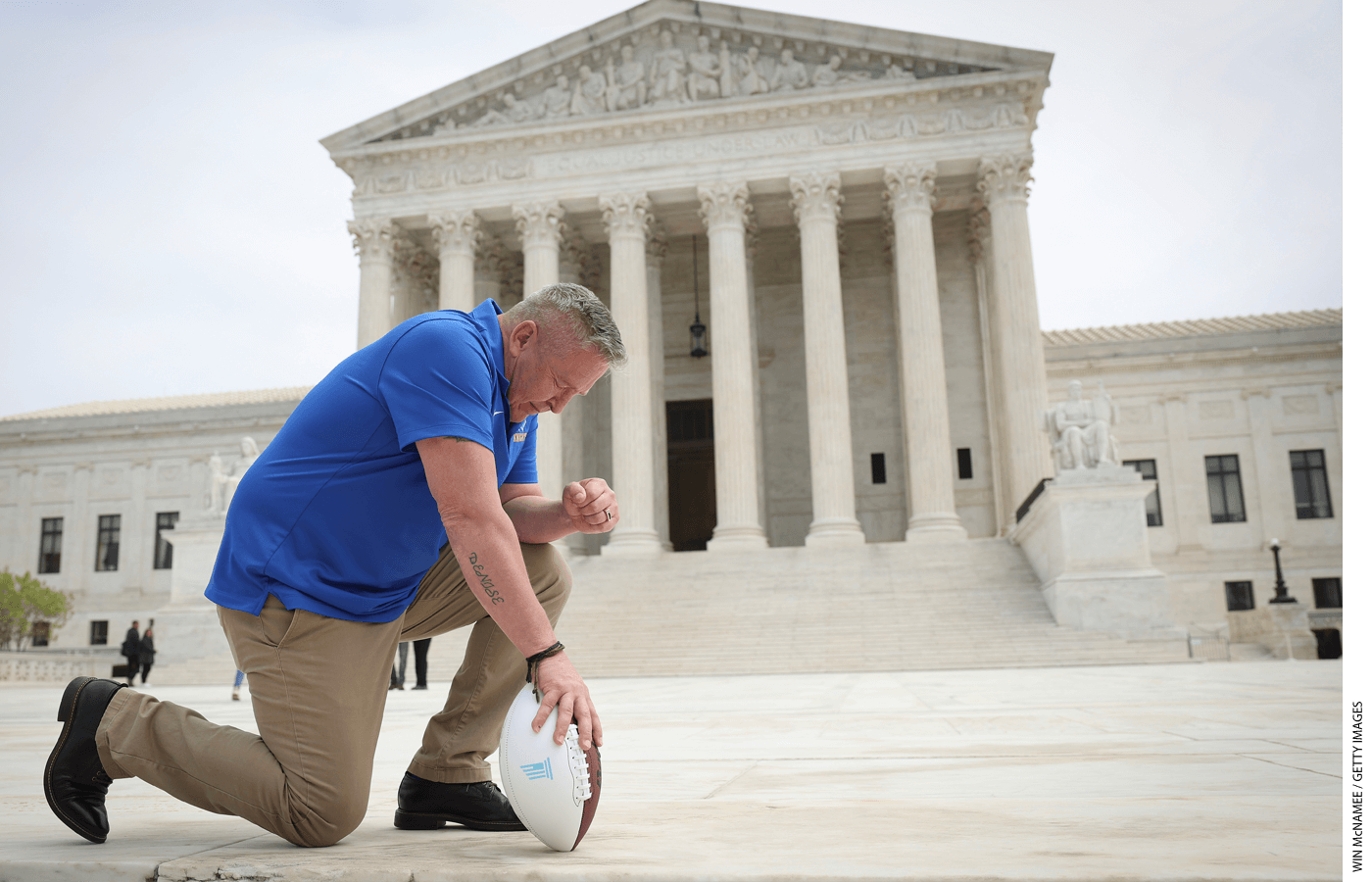
Additional Benefits
As teachers and students together learn about students’ constitutional rights, their awareness will likely help prevent schools from committing certain violations of those rights. A teacher who leads a classroom discussion on Barnette, for instance, will be unlikely to suspend students for refusing to salute the American flag. Such conflicts are distressingly common in American schools, even though Barnette repudiated mandatory flag salutes more than eight decades ago.
Teachers of a student-centered civic curriculum would, moreover, not only help to honor constitutional rights within their own classrooms, but they could also become invaluable resources for an entire school. It seems improbable that busy math and science teachers are going to educate themselves on the minutiae of the Supreme Court’s doctrine governing schools. Yet, when algebra and chemistry teachers confront scenarios touching upon students’ constitutional rights, civics instructors could provide guidance to their colleagues about constitutional protections. These same “in-house experts” could also serve as sounding boards for school administrators contemplating thorny constitutional questions, as it is often impractical to seek advice from school-board attorneys during a hectic school day. These informal consultations could well help increase respect for students’ constitutional rights within the school.
If schools commit fewer violations of students’ rights, they will also mitigate a significant source of political polarization. The nation’s public schools have become a battleground of the modern culture wars, and the media often highlight instances where school authorities have overstepped their constitutional authority. But media organizations have differing views on which violations to highlight, depending on whether these outlets lean left or right. The consumers of these varied, highly clickable reports are left to conclude that the nation’s public schools are systemically attacking their most cherished values, thereby intensifying the partisan divide.
Consider two recent high-profile constitutional controversies that arose when public schools erroneously abridged students’ First Amendment rights—the first involving speech associated with liberals and the second involving speech associated with conservatives. In 2021, two Black elementary school students in Ardmore, Oklahoma, wore T-shirts reading: “Black Lives Matter.” For this seemingly innocuous action, the students were ejected from their classrooms and forced to sit in an administrative office until the end of the day. One school official justified these disciplinary actions by stating that political statements would no longer be permitted at school. The district superintendent suggested that the policy pertained to statements from across the political spectrum: “I don’t want my kids wearing MAGA hats or Trump shirts to school either, because it just creates, in this emotionally charged environment, anxiety and issues that I don’t want our kids to deal with.” After this controversy appeared in the New York Times, the school district updated its policy to prohibit clothing “items [displaying] social or political content.”
The second controversy arose when a high school senior in Franklinton, Louisiana, had his school parking space painted with a portrait of Trump. School policy permitted seniors, for a modest fee, to decorate their spaces, and although the policy prohibited designs that included vulgar language or another student’s name, it did not forbid political statements. Nevertheless, school officials painted over the image, deeming it excessively political. A federal district court judge overrode the school’s decision, holding that it violated Tinker’s foundational protection for student speech. As one might predict, the case received no mention in the New York Times but was trumpeted by Fox News.
These dueling episodes and their attendant coverage—played to quite distinct, but nonetheless equally outraged audiences—further political polarization.
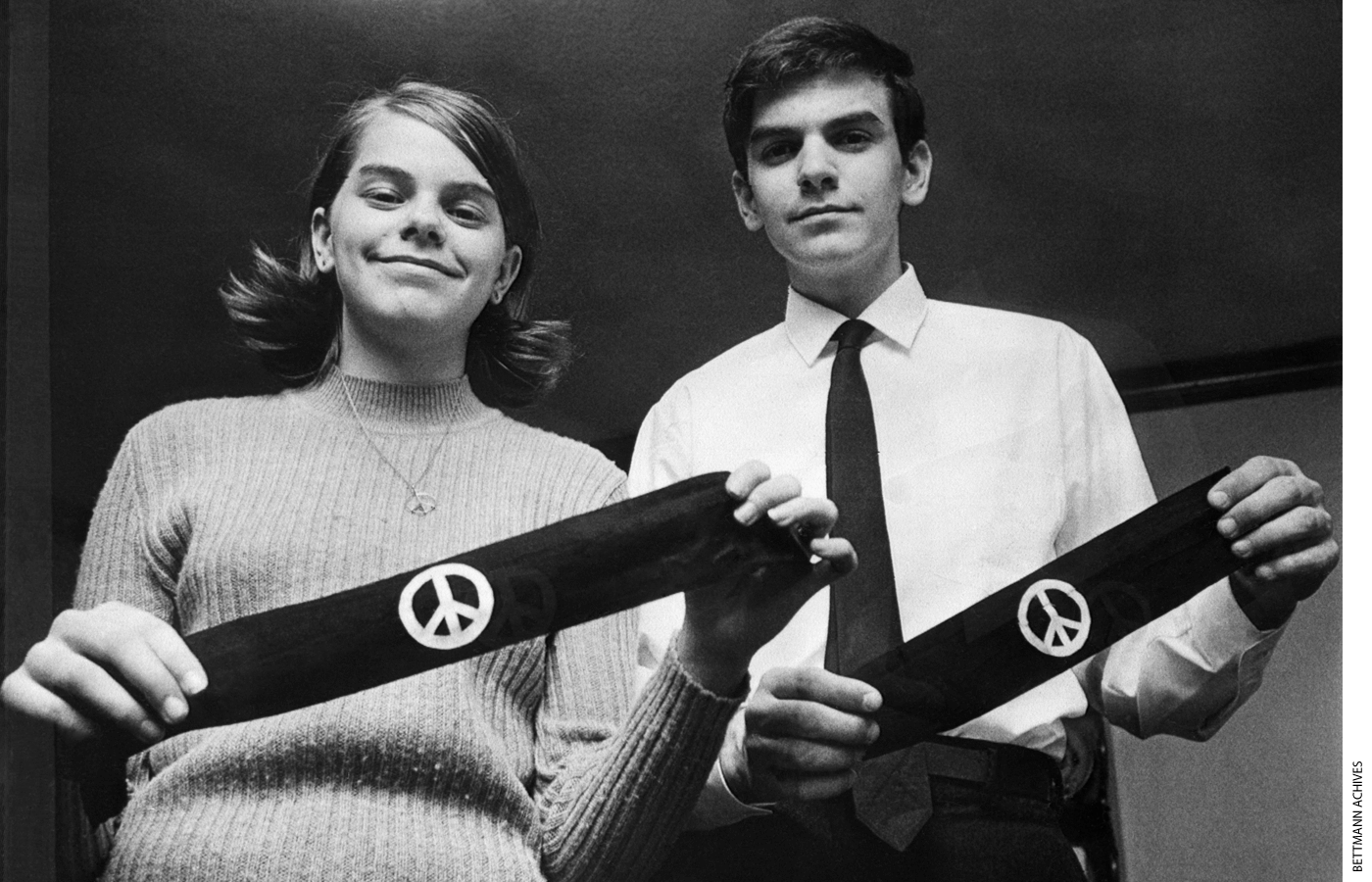
Going Further
Studying judicial opinions involving students’ constitutional rights would ideally lay the groundwork for exploring more-abstract concepts that undergird civic knowledge. For example, classroom discussion of Barnette’s prohibition on compulsory flag salutes in school sets up debate on the government’s ability to instill patriotism and to prohibit speech that is regarded as antipatriotic. Students could then consider state and federal legislative efforts to prohibit burning the American flag and the two Supreme Court decisions that invalidated such efforts. Teachers could use that discussion to illustrate concepts such as federalism, separation of powers, congressional authority, and executive authority. Similarly, a classroom discussion about Hazelwood School District v. Kuhlmeier—which held that educators can typically regulate articles appearing in school newspapers without violating the First Amendment—invites a conversation about the media’s central role in maintaining democracy. In addition, analyzing San Antonio Independent School District v. Rodriguez—which declined to invalidate dramatically unequal school-financing schemes—could spur reflection on how well a nation that extols equal opportunity for all lives up to that lofty ideal. Relatedly, Zelman v. Simmons-Harris—which upheld the constitutionality of governments offering students vouchers to attend private, religious schools—opens up a discussion about the Establishment Clause, economic theory, and the desirability of public-private partnerships.
A Presidential Commission?
How can proponents of robust civic education initiate the kind of widespread reform that I have sketched here? One vehicle of change could be a presidential commission on civic education. Many readers may counter that the road to inaction is paved with presidential commissions, and sometimes such criticisms are merited. Yet presidential commissions and their ilk can on occasion crystalize the public’s attention. For example, the renowned report A Nation at Risk served as a significant focal point for education reformers throughout much of the 1980s.
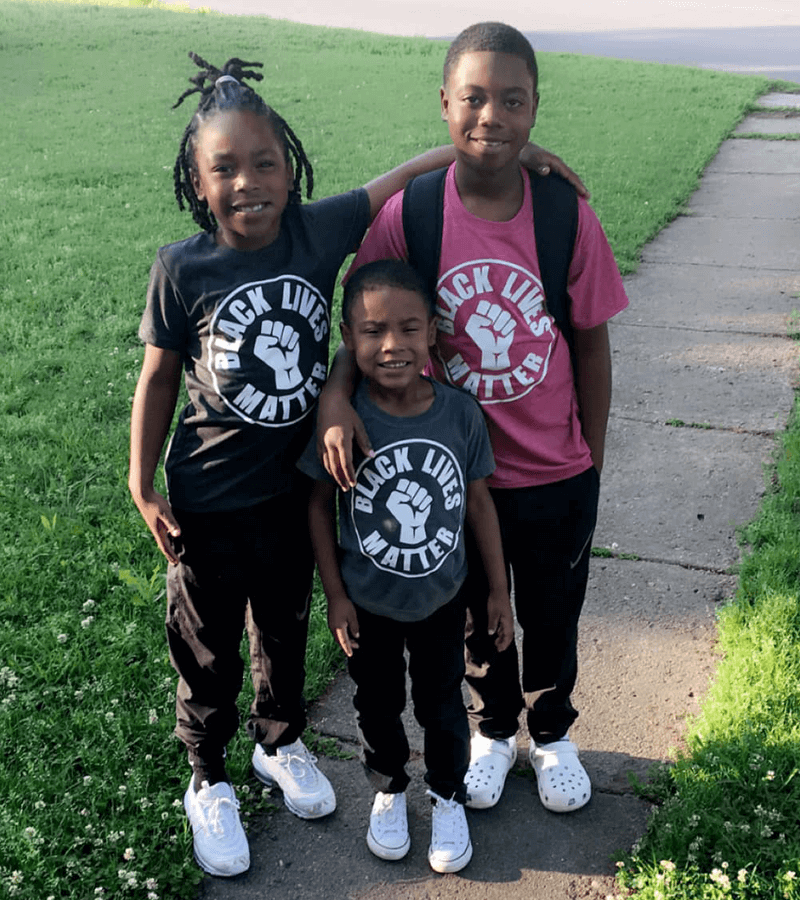
Numerous private, public, and philanthropic organizations have examined civic education over the years, but these pursuits too often happen in intellectual silos. While these efforts have value on their own, we need—especially today—to find a way to bring them together. A presidential commission examining civic education could provide an excellent occasion for such an assemblage, enabling communities to understand better which approaches work well and which do not. A commission that embraces student-centered civic education should include model lesson plans in an appendix to its report, distilling relevant Supreme Court opinions into portions that are easily digestible for students, offering hypothetical scenarios involving students that are designed to test the limits of those opinions, and providing concrete advice to teachers on how they might spur students to engage with those topics. The commission’s resource materials would ideally provide one-stop shopping for teachers focusing on civic education. Of course, the commission would in no sense aim to mandate that public schools adopt a particular approach. Instead, building on the abundant existing resources in this domain, the commission would devise a model that teachers and local school districts could adopt and adapt. The hope is that school districts and teachers from very different parts of the country would want to implement the framework because it would focus on the relevant topic of students’ constitutional rights and encourage students to actively and critically evaluate the content of those rights.
Forming a commission on civic education could be a sound political idea for a second term of President Joe Biden. In one of his first official moves in January 2021, Biden swiftly rescinded the 1776 Commission Report. The historian Michael Kazin then argued in the New York Times: “Now that the 1776 Commission is deprived of federal authority, its influence will wane more quickly than that of the president who established it.” But just as Trump continues to cast a long shadow over American politics and culture, the 1776 Commission’s Report has not vanished, as its content can easily be accessed via the Internet. Closing our eyes will not, moreover, magically make it disappear. Instead, Biden should assemble a civically minded group from a range of ideological perspectives to offer an affirmative vision of civic education—one that highlights the struggle for students’ constitutional rights. If the president seeks to dislodge the 1776 Report from our intellectual landscape, he must offer his own conception of civic education, and he should frame it, as Gorsuch did, as promoting a vital national security interest.
Prominent Republicans have not shied away from discussing civic education. In May 2020, Steve Bannon, former adviser to President Trump, offered a remarkable statement about future political struggles: “The path to save the nation is very simple—it’s going to go through the school boards.” In the aftermath of the 2020 election, it seems that some right-wing Republicans have embraced what might be termed the “Bannon Playbook” by focusing on education issues. Perhaps the foremost tactic in this political strategy has sought to transform and distort Critical Race Theory into an intellectual bogeyman. Leading figures in the Democratic Party have too often remained silent on these high-profile cultural questions. But it is incumbent upon Democrats, I believe, to provide their own notions of civic education. As the old adage runs, “If you don’t define yourself, someone else will do it for you.”
President Biden has emphasized his desire to locate common ground with Republicans when possible—without sacrificing his core principles. Focusing on students’ constitutional rights as articulated by the Supreme Court—a struggle that dates back to the first half of the 20th century—would enable Biden’s commission to minimize some of the polarizing disputes that have proved insoluble during recent debates. Many Americans understand the profound need to address missing, limited, or ineffective civic education as a way of bolstering our nation’s foundational commitments. In 2018, for instance, one national survey found that the most popular approach to fortifying American democracy was a policy aimed at “ensur[ing] that schools make civic education a bigger part of the curriculum.” To underscore that the commission is truly dedicated to locating commonality on civic education for Americans of different political stripes, Biden should make sure to tap high-profile people associated with the Republican Party to serve. Indeed, he could even consider selecting Chief Justice Roberts to chair, or co-chair, the civic-education commission. If the chief justice should decline, Biden could nonetheless identify Roberts’s year-end report from 2019 as an important inspiration for the group and even title the commission after a passage that Roberts wrote. Near the very end of his report, Roberts stated: “Civic education, like all education, is a continuing enterprise and conversation.” Biden’s Presidential Commission on the Civic Enterprise has a nice ring to it, suggesting that civic education is a collaborative, difficult undertaking that demands considerable effort.
The ideas that I have outlined here are sure to generate disagreement. Some readers may contend that “students’ constitutional rights” is a contradiction in terms. Justice Clarence Thomas has espoused precisely that view regarding student speech, and teachers adopting the student-centered model of civic education should have their own students confront it. Other readers may maintain that the president ought not tread on ground that rightly belongs to states and localities. Still others may find that student-centered civic education places too much attention on judges, courts, and rights at the expense of other material. For my own part, I welcome such disagreements—and many others besides—because their existence would indicate that civic education is being actively debated in venues where such debates remain all too rare.
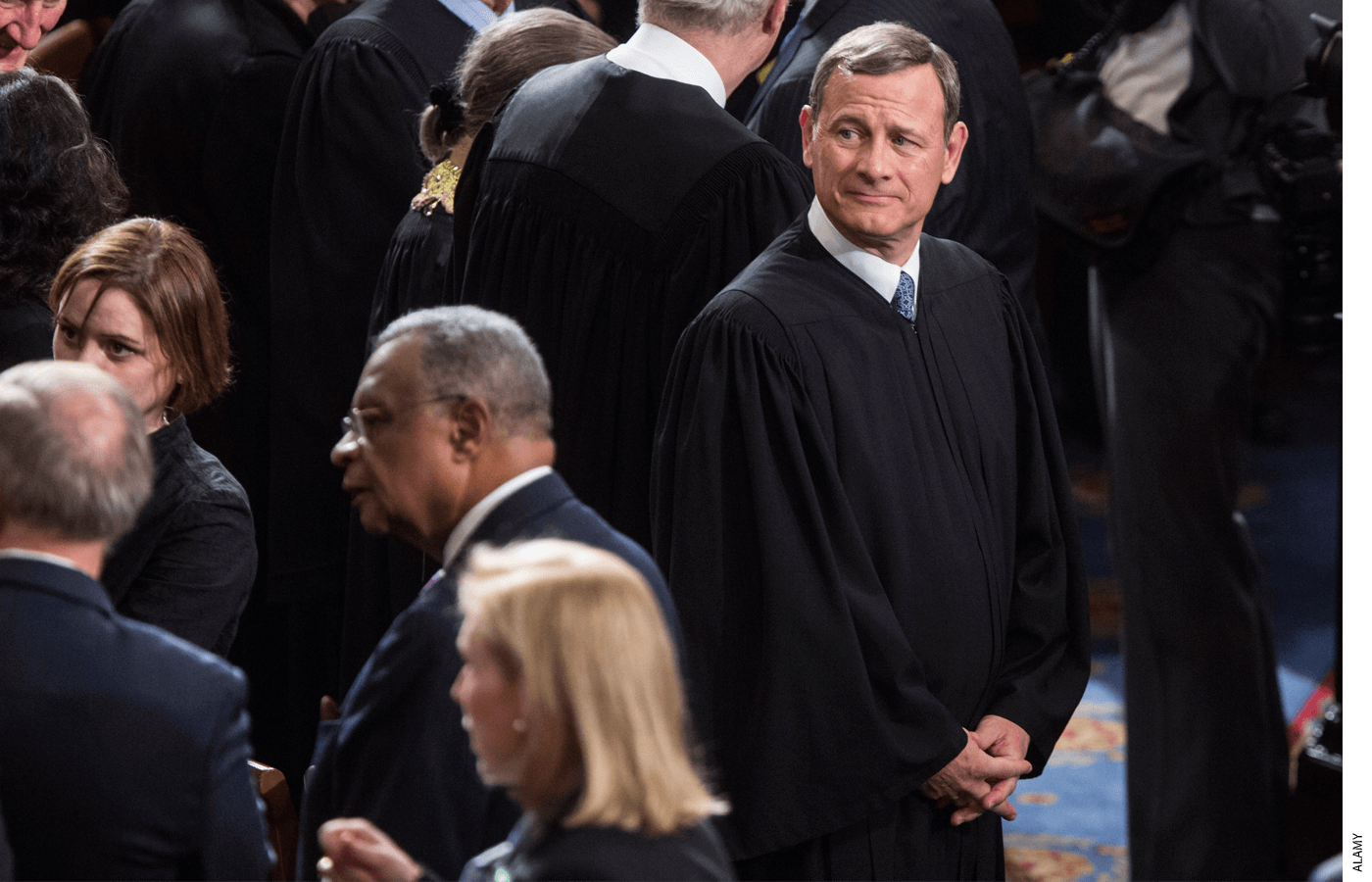
Firsthand Experience
My interest in promoting the student-centered model of civic education is not purely theoretical; it is informed by my own experience. On graduating from college in 1997, long before I dreamed of becoming a law professor, I enrolled in a one-year teacher-certification program at Duke University. As part of that program, I had the privilege of teaching a civic-education class to 9th graders at a public school in Durham, North Carolina. I recall witnessing the students—some of whom had displayed minimal interest in analyzing the differences among the three branches of government—come alive when we turned our attention to Tinker. I believe that the students engaged with Tinker deeply because they viewed themselves—at long last—as having some skin in the game. They felt they had genuine expertise about the regulation of students in schools.
Some two decades later, after I joined the faculty at Yale Law School in 2019, I became the faculty adviser for a long-standing program that places law-school students in New Haven’s public schools to teach a student-centered civic-education course. In a small but meaningful way, this program helps bridge the wide chasm that all too often separates elite, cloistered Yale from gritty, under-resourced New Haven. The redoubtable, committed Yale Law students who participate in the program do virtually all of the work, including preparing their students for a citywide oral-argument competition that occurs on Yale’s campus.
I find that visiting those classrooms and seeing student-centered civic education in action is always an inspiring experience. During my first year at Yale, I remember driving early one morning across town to a New Haven public school—one with a virtually all Black and Latino student population, a majority of whom are eligible for free lunch. After passing through the school’s metal detectors, I found my way to the correct classroom, where I witnessed students diligently preparing for their upcoming oral arguments. The students sounded very much like young lawyers, using shorthand for case names to claim that the Supreme Court’s precedents either required (or foreclosed) finding that a hypothetical principal violated a hypothetical student’s First Amendment rights. These students plainly viewed themselves as the subjects of law, not the objects of law, and felt legally and civically empowered. As the students began filing out after class, I overheard one young Black woman say quietly to a classmate, “I want to be a judge when I grow up.” It is my fervent hope that expanding the student-centered model in our schools will inspire more young people around the country to embrace such civically minded ambitions.
Justin Driver is the Robert R. Slaughter Professor of Law at Yale Law School and the author of The Schoolhouse Gate. This essay is drawn from an article that will appear in a NOMOS volume titled Civic Education in Polarized Times, to be published by New York University Press.
This article appeared in the Summer 2024 issue of Education Next. Suggested citation format:
Driver, J. (2024). Building Better Citizens Begins in the Classroom: For civics to matter again, students must actively engage with their own constitutional rights. Education Next, 24(3), 22-31.


